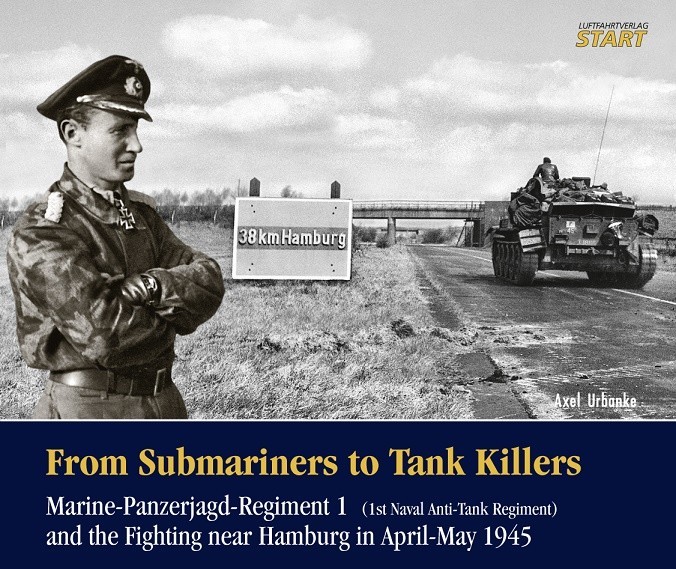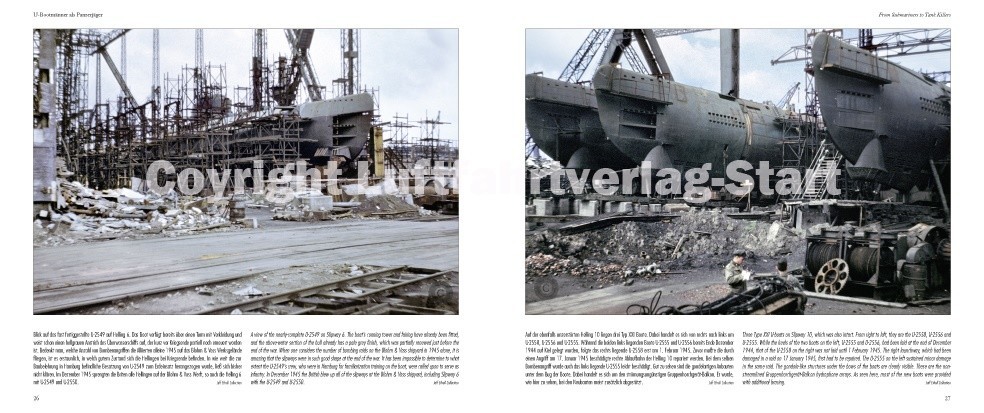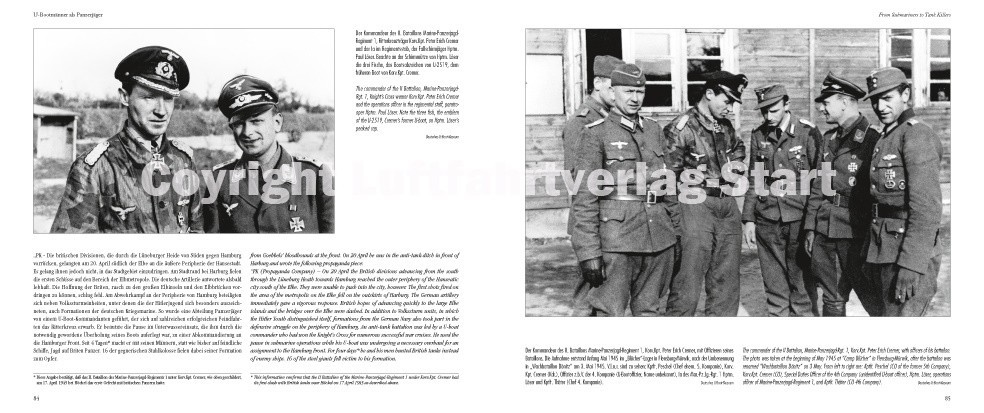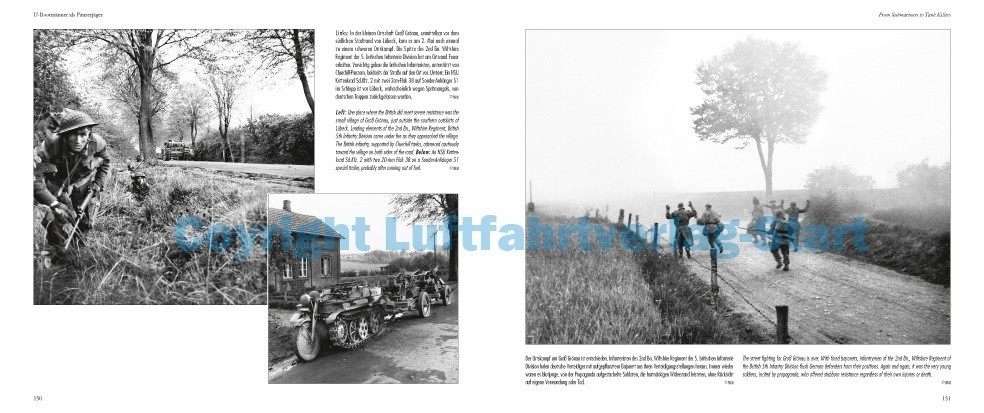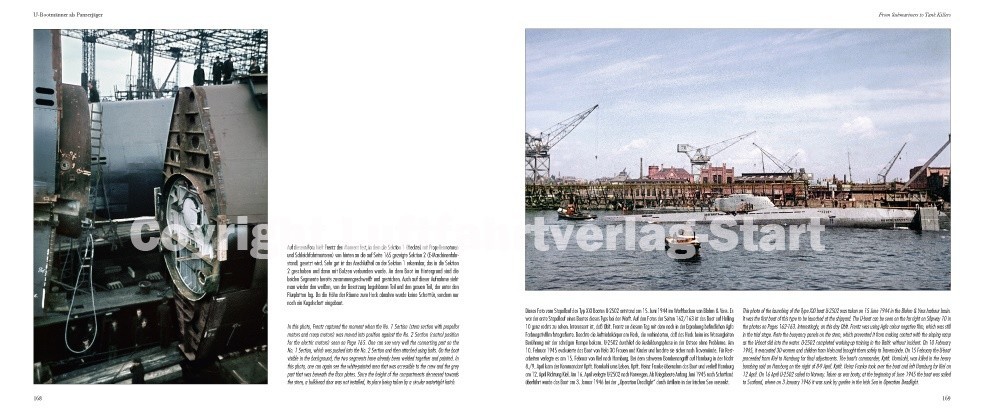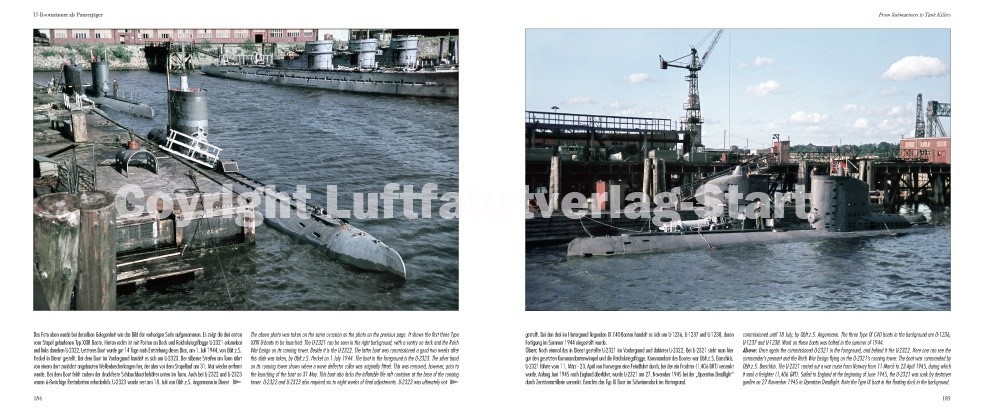FROM SUBMARINERS TO TANK KILLERS/U-BOOTMANNER ALS PANZERJAGER/
Marine-Panzerjagd-Regiment 1 (1st Naval Anti-Tank Regiment) and the Fighting near Hamburg in April-May 1945
Autore: Axel Urbanke
Codice: 628003
Questo volume bilingue (tedesco-inglese), arricchito da oltre 150 foto e 15 mappe, è un emozionante pezzo di storia contemporanea che fornisce una visione alternativa degli eventi e dei mezzi marini coinvolti negli scontri vicino ad Amburgo nel 1945.
---
The project began when Axel Urbanke wanted to write an article about “Panzerjagdkommando Cremer”, which fought south of Hamburg in April 1945. However, it was discovered that information about the deployment of this commando did not correspond with the facts. Most of the literature on regional events of the war contained brief, erroneous accounts.
As the article grew in scope, the decision was made to work up the topic as a book. It was quite difficult to research, starting with finding out which submarine crews were actually called up for combat duty. Information on the battles and the locations of the Marine-Panzerjagd-Regiment 1 at the war’s end also had to be gathered from many disparate sources.
A highlight is an extra chapter on the construction of the Type XXI and Type XXIII boats, in which Herr Urbanke was allowed to use unique colour slides of the construction and commissioning of these boats, thanks to the support of the son of Walter Frentz (war correspondent at the Führer’s headquarters). The slides were taken by Oblt. Frentz in mid-1944, when he was commissioned by Hitler to film all modern new weapons in colour. On this occasion, Frentz took colour slides privately.
-
At the beginning of April 1945, it became clear that the surrender of the Wehrmacht was only a matter of days or weeks. But despite this hopeless prospect, the German troops still put up fierce resistance to the enemy. Most of the front-line soldiers had long since given up hope of an already illusory final victory. Other goals now had priority. The way to the west had to be kept open for columns of refugees; steps had to be taken to ensure that civilians and wounded comrades could be evacuated by sea; and a path to the west had to be cleared for their own troops. The great spectre on the Eastern Front was that of being overrun by the Russians and then being subjected to their reprisals. Very few interested people today know that a stubborn fight against the British and Americans was also necessary on the Western Front in order to achieve these goals. So in April, the Germans were playing for time, because every day that the Wehrmacht troops in the West delayed surrender saved the lives of thousands, even tens of thousands of people in the East. But Hitler was still alive and making his unrealistic decisions in Berlin. To oppose his orders in those days could quickly mean death. In this situation, Hamburg, a city of millions, made preparations for a „defence to the last round of ammunition“. Disaster loomed. Due to a lack of troops, at the beginning of April, the High Command of the Wehrmacht increasingly resorted to sailors whose ships had been sunk, were damaged, or are no longer able to sail due to a lack of fuel. Among these men were about 2,000 submariners who had been waiting in the Elbe metropolis for the completion or repair of their U-boats. Now, instead of putting to sea in their boats to fight the enemy, they stood up to the British with Panzerfaust anti-tank weapons as part of the 1st Naval Anti-Tank Regiment. Under the level-headed battle commander of Hamburg, they put up such a measured resistance that time was gained to finally surrender Hamburg without a fight and, by stopping the British at the Elbe, keep the Baltic ports open to refugees for about 14 days longer. This book is an exciting piece of contemporary history that provides a somewhat different view of the events of that time. Follow the submariners’ fight in the Harburg Hills and on the Elbe, which has never been summarised until today and which saved the lives of tens of thousands of people.
BILINGUE: TEDESCO-INGLESE
158 foto di cui 48 acolori, 15 mappe
192
28,5 x 24
SI


